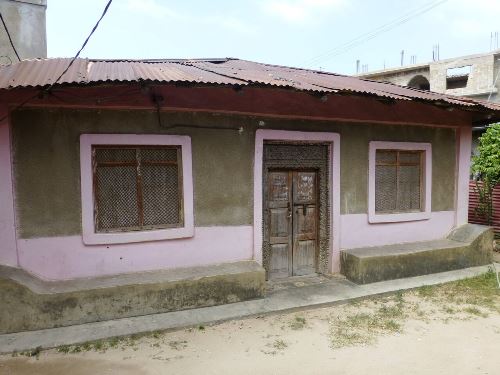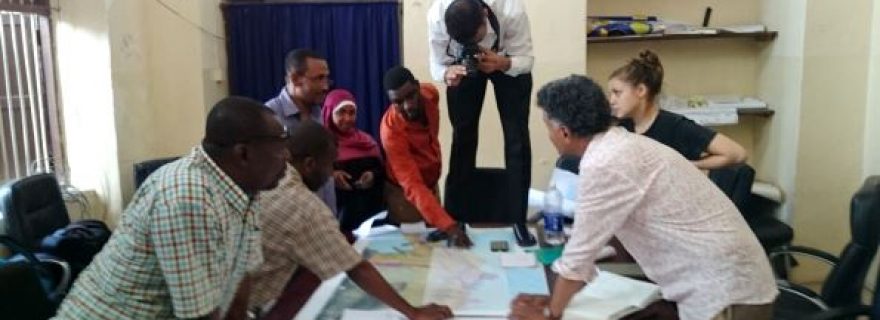Future heritage? The 'Historic Urban Landscape' approach in Zanzibar and Amsterdam
What can Zanzibar Town in Tanzania learn about managing world heritage from Amsterdam, and vice versa? At least one thing: that intangible heritage is not a matter of the past, and that its purpose - its future – may ‘conserve’ it most effectively.
This is what seems to me the most striking conclusion of the symposium 'Finding Stories: The role of immaterial culture in city planning', organised on 30 January in the Amstelkerk, the headquarters of Stadsherstel Amsterdam - a restoration company that restores and preserves all kinds of monuments in urban and rural environment (in itself an impressive piece of urban heritage). Stadsherstel and African Architecture Matters (AAM) planned the symposium to round off a week of design work on Ng’ambo, a neighbourhood that UNESCO designated the buffer zone of the world heritage site of Zanzibar Stone Town.
Urban heritage and UNESCO regulations
Stone Town, home of the Omani sultans and one of the first consumer societies of Africa, was the hub of a nineteenth-century trade empire in ivory, slaves and spices. It stimulated the textile booms of both Salem, Massachusetts and (when the American Civil War blocked shipping) the Bombay cotton industry. Today, UNESCO World Heritage regulations limit the development of Ng’ambo (meaning, in Swahili, 'the other side' of the creek that once divided the two parts of the city). At the same time, the Zanzibari government wants Ng’ambo to become a centre of urban heritage for both visitors and indigenous inhabitants.
In 2013 AAM, together with the Department of Urban and Rural Planning (DoURP) of Zanzibar, started the project Ng’ambo Tuitakayo ('The Ng’ambo We Want'), with the aim of realizing UNESCO’s Historic Urban Landscape approach (HUL) in Zanzibar. The design studios and symposium in Amsterdam brought together a delegation of 11 Zanzibari planners and heritage experts with other researchers in African urban heritage, and experts from Stadsherstel and the Departments of Monuments & Archaeology and Urban Planning & Sustainability of the city of Amsterdam. But how can applying a UNESCO approach in Zanzibar result in a contribution to heritage management in Amsterdam?

The bazara of a Swahili house - By AforA Architects
Heritage versus development
UNESCO’s HUL recommendation of 2011 is remarkable: while its concerns about the threat to urban heritage by “uncontrolled development” are as old as Alexandre Lenoir’s worries about patrimoine during the French Revolution, its formulation often overturns Eurocentric assumptions that have governed the World Heritage Convention since 1972. It not only foregrounds “cultural diversity and creativity”, but also suggests one should learn from local communities to fully appreciate that urban heritage is “defined by an historic layering of values”, rather than fixating a single cultural origin. It conflates 'dead' cultural and 'living' natural heritage in a conception of 'landscape', and rather than zooming in on material sites such as an old city centre, it foregrounds the cultivation of values that defines intangible heritage.
The irony is that UNESCO’s earlier conventions are difficult to reconcile with these more recent understandings of living heritage. Worse, they tend to deny even the life of “heritage” itself, because they ignore the anthropological insight that by labelling something “heritage” we transform it into someone’s “outstanding” value. Even if this claim tries to be genuinely universal, it usually transfers practical control of heritage items to privileged parties. The inhabitants of Ng’ambo know this: many of them regard Stone Town, the official World Heritage Site, as the possession of government and tourists, and fear that a further spread of a heritage designation will deprive them of the ways they use Ng’ambo today. In fact, some of them explicitly say they want development (maendeleo) rather than heritage (urithi).
Local stories and the future
‘Development’, unlike ‘heritage’, is future-oriented. This temporal reversal first became clear to me when I supervised the field research in Ng’ambo of Marie Morel, who also co-organized the design studios and symposium for AAM. Her Master’s thesis of 2015 records the fact that the inhabitants of Ng’ambo rarely saw World Heritage as something in which they shared. It also shows how Ng’ambo as a neighbourhood was shaped by the 'baraza' – a semi-public porch-front of the house, immediately abounding the street – and the 'maskan' – a public gathering place, mostly for men. At this scale, people do, indeed, 'own' their neighbourhood and share an immaterial culture, for at the baraza and maskani, people tell the stories that give meaning to their life – the kind of stories that the symposium tried to find and translate into urban design.
For me, going about the task of redesigning Ng’ambo through finding its inhabitants’ stories, uncovered an aspect of that translation that the UNESCO approach, I think, fails to address. It came out particularly well when Muhammad Juma, Director of DoURP, argued that the purpose of a story – its future – determines how and whether it can be translated into urban design. Indeed, AAM and DoURP defined Ng’ambo Tuitakayo from the outset as a “regeneration” project, one that sees the cultivation of intangible values as more important than conserving buildings.

Maskan Ajax Amsterdam - By Marie Morel
Making history
But this has to work from local stories - much as the Museum for the History of the Polish Jews recreated a past, demolished with the Warsaw ghetto, on the basis of an intangible story. Local stories are alive on a certain scale – small at the vodun shrine (as Franck Houndégla argued for Porto Novo in Bénin), larger when they relate to a neighbourhood (as Abderrahim Kassou showed in Casablanca), and larger still when (like AAM and the DoURP) they involve layer upon layer of maps of Ng’ambo. Once the stories are consumed by UNESCO’s preoccupation with conserving a past in terms of “heritage” at the scale of nation-states and international organizations, however, their life is drained away; the purpose of the stories is now replaced by a future of conservation that is not their own.
This, then, is what Zanzibar can teach Amsterdam: the HUL approach’s promise of participatory planning cannot materialise unless it makes room for the aspirations for the future that are inherent in narratives from the small scale up. In the words of Barbara Kirshenblatt-Gimblett: one needs to use local stories that, once materialized, “make history”, that is, create a heritage for the future. The Ng’ambo Tuitakayo project is a unique chance to turn HUL into the making rather than merely the conserving of history – beyond mere planning for tourism. But as long as UNESCO defines world heritage as conserving the past, world heritage itself may become part of the “uncontrolled development” that the Historic Urban Landscape approach tries to prevent.



0 Comments
Add a comment